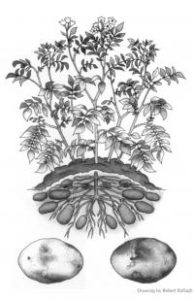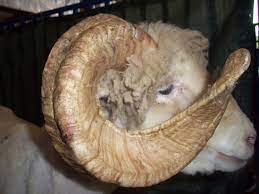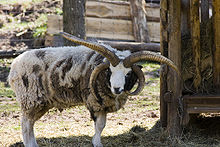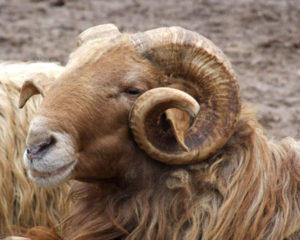Shave ‘Em to Save ‘Em
Cathy Koos
Why should we bother saving old heritage breeds of sheep, cattle, and vegetables when our farmers have standardized genetics and hybrids for uniform production of meat, fleece and even tomatoes? Does genetic diversity matter? The Livestock Conservancy likens the animals and veggies that we depend on for food and clothing to a stock portfolio. A stock portfolio tied up in one or two companies is fine and dandy until those companies fold and you are left holding worthless paper.
It is the same with livestock and veggies. We only must look as recently as the potato famine when the Irish grew only one variety of potato, the Lumper. When blight hit in the 1800s, it was variety specific. Crops were lost and people died of starvation.

Figure 1 Lumper potato, Wikipedia
As climate change affects our weather, many standard species we have come to rely on may be affected. If grazing lands no longer produce the usual grasses, we will need livestock that can eat marginal foods. Some sheep and cattle breeds in Scotland and Ireland regularly eat and thrive on seaweed from the beach shingles.
This is where critical organizations such as the Livestock Conservancy in America and the Rare Breeds Survival Trust in the UK come into play. Between these two conservation groups, scores of endangered and rare livestock are making a comeback.

Figure 2 Dorset Sheep, Wikipedia
Shave ‘Em to Save ‘Em is a lighthearted name for an extremely critical worldwide program sponsored by the Livestock Conservancy engages in saving endangered livestock and bringing back herd populations. This challenge campaign promotes the wool of rare breed sheep and goats. Their online presence encourages not only the shepherds but the fiber artists as well. By purchasing fleece from participating shepherds, the fiber artist can not only work with unusual fleeces but promotes the shepherd and helps support their flocks. To connect with shepherds and purchase these yyummy fleeces, go here https://livestockconservancy.org/get-involved/shave-em-to-save-em/

Figure 3 Jacob sheep, Wildpark Tam
My guild recently enjoyed a program presented by Lee Bergman on a sampling of wools she purchased from a broad spectrum of participating shepherds. Ranging from American Karakul (a hair breed) to Black Welsh Mountain sheep (giving the only true black) to Cotswolds that were introduced into England by the Romans, Lee spun samples from ten different breeds and shared some highlights of the breeds.

Figure 4 Karakul, American Livestock Conservancy
For instance, the Dorset Horn can mate year-round and regularly births twins and triplets. One specific flock of Jacob sheep was found to have a recessive gene that has allowed scientists to conduct gene therapy trials for Tay Sachs disease. The feral Gulf Coast Native and Florida Cracker happily consume the invasive kudzu plant and are resistant to foot rot and parasites.
As our world changes and responds to climate vagaries, let’s remember the heritage breeds and value their ability to survive.